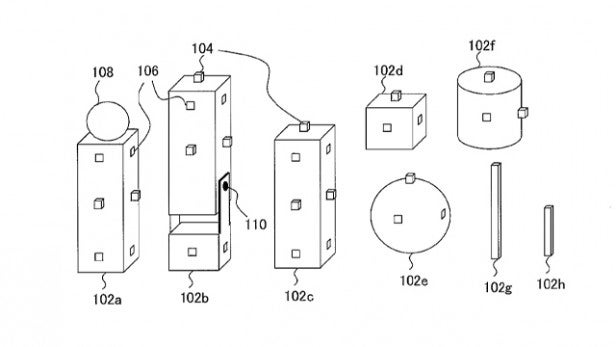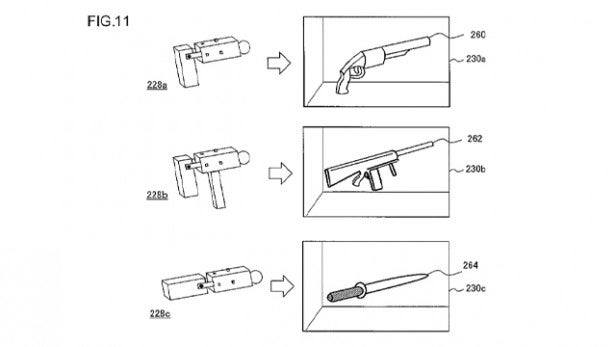Sony patents bizarre transforming PlayStation Move controller

Sony has filed a patent for a rather bizarre PlayStation Move controller that can be assembled to form different shapes.
A new PlayStation Move controller patent has been filed by Sony and could open up augmented reality gaming on the PS4.
The build-your-own PlayStation Move controller is formed by different blocks, with sensors located at a pivot or connection points that help represent in-game items.
“
Along with the patent, published January 16 2013, Sony has included a range of diagrams that illustrate how this next-generation PlayStation Move controller can be configured to represent different weapons and characters.
In one illustration the controller is used to represent a shotgun, machine gun and a knife just by the arrangement of the blocks. In another, the configuration represents an on-screen bat and in another it’s a person.
“Also, a connecting position and the type of each block, a gradient vector of the square-pillar block, an angle between two blocks constituting the square-pillar block, and the respective blocks’ lengths are obtained so as to derive the shape, posture, and position of the block tool, and corresponding information processing is then performed.”
By being able to transform the PlayStation Move controller into the thing it represents, Sony could help immerse the player into the project AR environment. This would be especially enhanced if the next-gen PlayStation Move controller made use of haptic feedback.
The different assembly forms of the controller would be picked up by the PS4 PlayStation Camera peripheral.
From the looks of the patent filing, the transforming PlayStation Move 2 controller would have at least eight parts, but you could add more to create more complicated constructions like the bat, which uses two PlayStation Move orbs.
Late last year, Sony filed another patent for a second-generation PlayStation Move controller for PS4 that was more akin to the original PlayStation Move.
Read more: PS4 vs Xbox One



Via: NeoGAF

